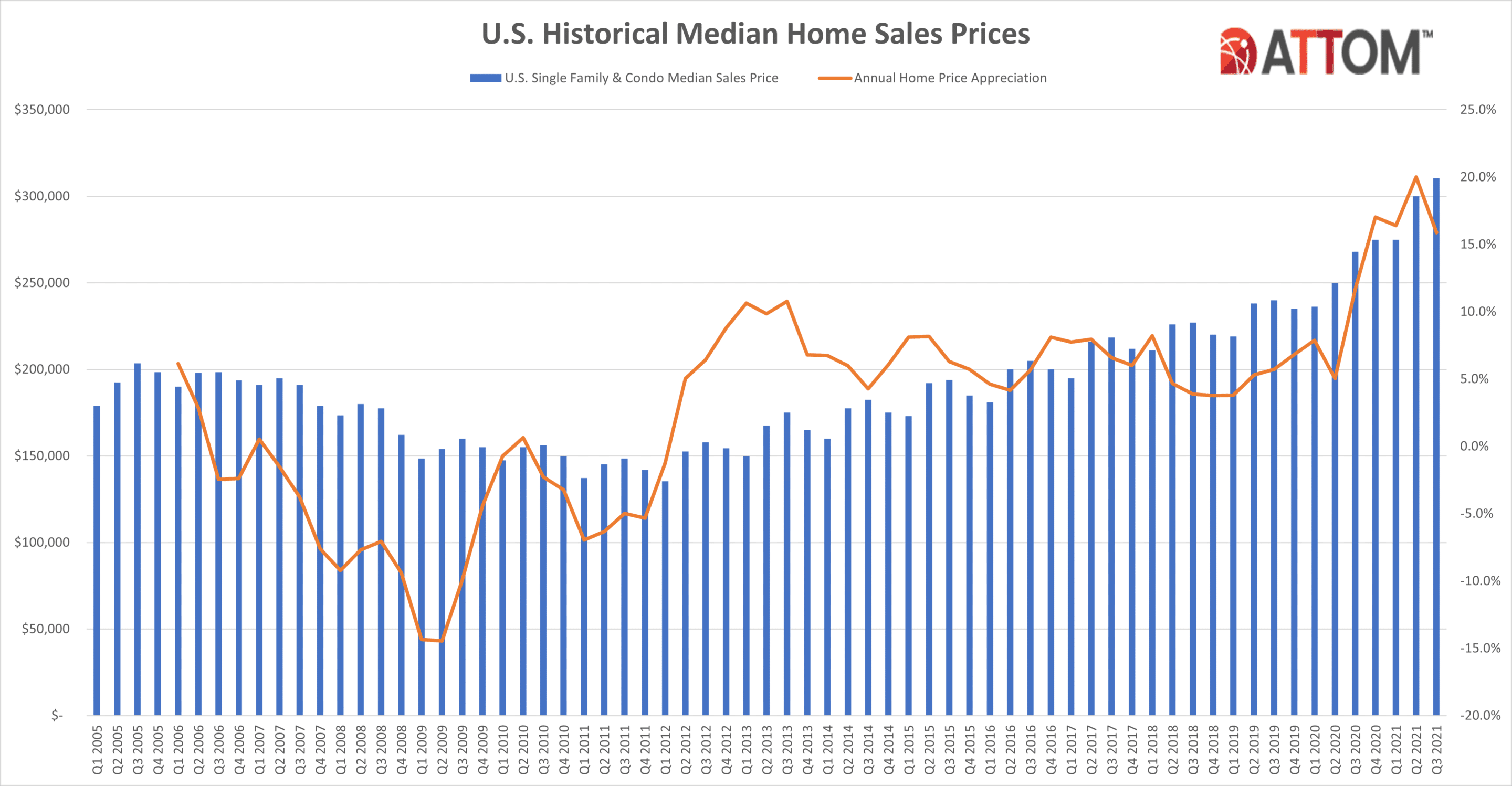 The latest U.S. Home Sales Report from ATTOM has shown that profit margins on median-priced single-family U.S. homes and condos jumped to 47.6% in Q3, hitting highs not seen since the close of the Great Recession nearly a decade ago.
The latest U.S. Home Sales Report from ATTOM has shown that profit margins on median-priced single-family U.S. homes and condos jumped to 47.6% in Q3, hitting highs not seen since the close of the Great Recession nearly a decade ago.
In Q3, the typical U.S. single-family home delivered an average profit of $100,178 per seller, as the national median home sales price hit a record of $310,500. According to ATTOM, profit levels were up from $88,800 in Q2 of 2021 and up from $69,000 year-over-year in Q3 of 2020.
"The third quarter of this year marked another period in a banner year for a housing market boom that's steaming ahead through its 10th year. Prices and seller profits again hit new highs since the market started coming back from the Great Recession in 2012," said Todd Teta, Chief Product Officer at ATTOM. "There have been a couple of small hints of a possible slowdown in recent months, as we head into the normally quiet fall and winter seasons. The pandemic also remains a constant presence that could tamp things down. But, for now, the market engine seems to have nothing but high-octane gas in the tank."
ATTOM found that nationwide, median home prices rose annually in Q3 in 93% of U.S. metropolitan areas, while profit margins increased in 86% of these metros.

CoreLogic’s latest Home Price Index (HPI) and HPI Forecast for September 2021 found that continued high demand for the short supply of homes drove prices upward 18% year-over-year, led by millennials who continue to comprise most of the homebuyer demand.
Typical profit margins analyzed by ATTOM–the percent change between median purchase and resale prices–rose from Q3 of 2020 to Q3 of 2021 in 175 (86%) of 204 metro areas nationwide. Margins also increased from Q2 to Q3 of 2021 in 168 of the 204 metros (82%).
The biggest annual Q3 increases in profit margins were found in the following five markets:
- Boise City, Idaho: up from 61.4% to 130.3%
- Claremont-Lebanon, New Hampshire: up from 41.1% to 93.8%
- Augusta, Georgia: up from 19.6% to 56.6%
- Raleigh, North Carolina: up from 30.4% to 67%
- Bellingham, Washington: up from 69.5% to 105.6%
Workers who have the option to work remotely continued to flock to the greater expanses of the Western U.S., as the largest profit margins on typical home sales were led by:
- Boise City, Idaho bringing a 130.3% return)
- Bellingham, Washington bringing a 105.6% return
- Claremont-Lebanon, New Hampshire bringing a 93.8% return
- Spokane, Washington with an 87.7% return
- Prescott, Arizona with an 84.7% return
On the other end of the spectrum, 11 of the 15 smallest profit margins were in the Southern U.S., with the lowest found in:
- Shreveport, Louisiana bringing a 2% return
- Gulfport, Mississippi bringing a 7.4% return
- Columbus, Georgia bringing a 9.9% return
- Atlantic City, New Jersey bringing a 12.4% return
- Brownsville, Texas bringing a 13% return
The biggest Q3 year-over-year increases in median home prices were found in:
- Worcester, Massachusetts, up 42.9%
- Barnstable, Massachusetts, up 32.5%
- Boston, up 28.4%
- Boise, Idaho, up 28.3%
- Lakeland, Florida, up 27.8%
Click here for more from ATTOM’s Q3 U.S. Home Sales Report.

 theMReport.com Your trusted source for mortgage banking news
theMReport.com Your trusted source for mortgage banking news








